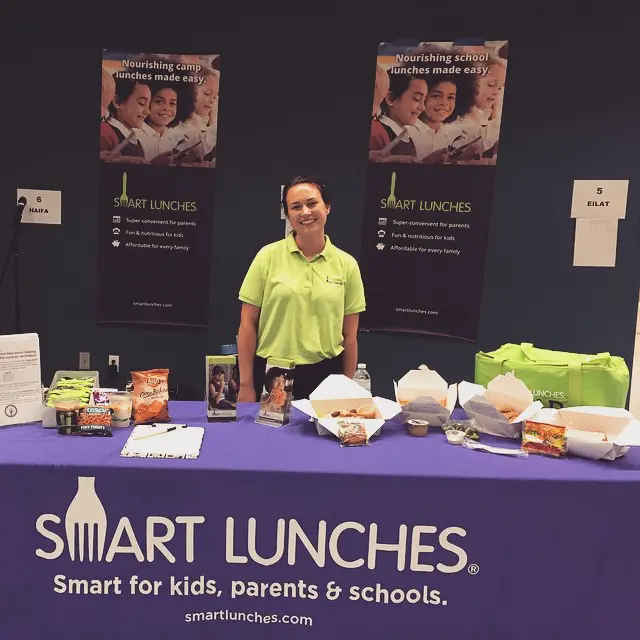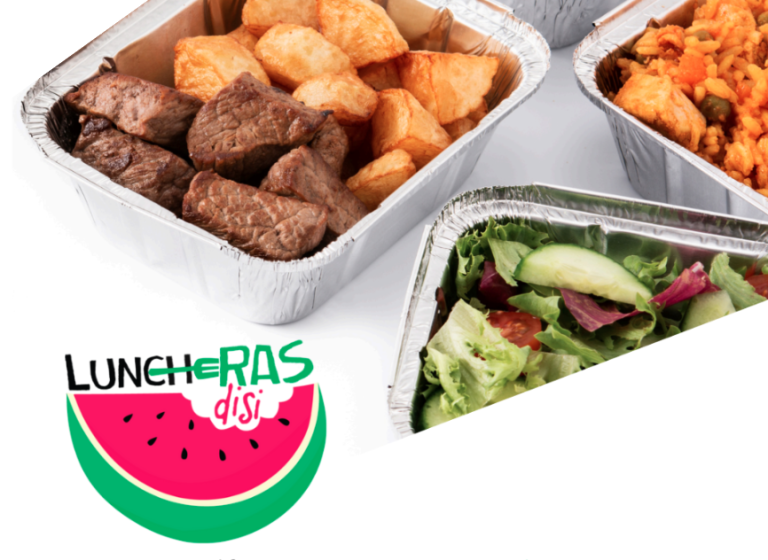Starting a catering business in 2025 begins with a single, often overlooked document: a catering license. Without it, your food business dreams remain just that—dreams. The path to getting licensed might seem boring and filled with rules, but it’s the first real step toward turning your food passion into a business that pays your bills.
Here’s what most people don’t tell you: the licensing process isn’t just about permission—it’s your crash course in food safety, business operations, and local regulations. It’s where you’ll learn if your whole store or kitchen meets the code, if your food handling practices are safe, and if your business ownership model works in your area.
The good news? In 2025, many cities have streamlined their alcohol licensing review processes. What once took months can now take weeks—if you know exactly what to do.
This guide walks you through each step of getting your catering license and starting your food business the right way. We’ll cover everything from researching local health department rules to choosing the right business structure while highlighting new regulations private events, and trends that will shape the food industry this year.

Metrobi drivers are rated 4.97 out of 5
Trusted by local businesses for:
- Background-checked professionals
- Specialized in business deliveries
- Same drivers for consistency
- 4.97/5 average delivery rating
Understanding Catering License Requirements
Know local regulations to meet legal needs.
Handle documents for a smooth application.
Plan costs, including fees and potential surprises.
Research Local Regulations
Understanding local laws is the first big step when starting a catering business. You need to study the health department rules of your area. Most local health offices have information online or at their physical locations.
Zoning laws are another critical area. A catering business might not operate in areas zoned for residential use without proper permits. Checking local zoning laws can avoid potential fines. Resources like the American Planning Association’s website can help you dig deeper into zoning regulations across different regions.
Finally, local food safety guidelines must be understood in detail. These rules often include requirements for kitchens and food storage. Discovering what kinds of inspections will be required beforehand saves time. If possible, connect with local catering associations for more tailored information. These groups often host workshops where you can learn firsthand how regulations work in practice.
Application Process
Preparation is crucial. First, compile necessary documents such as identification, required documents and proof of business registration. This saves time and potential delays. Think of the required documents as steps in securing your foothold in this competitive market.
Next, accurately completing and submitting application forms is vital. Any mistakes might prolong the process. Many regions even have online submission options. You should check if your area offers online services which might expedite things.
Submitting forms to contact the correct local authority is essential. Understand different departments oversee different aspects of catering operations. The health department often deals with food safety, while business licensing might fall under another branch. Engaging with a local business advisor or attending chamber of commerce meetings can provide insights into whom to contact and how to streamline the process.
Cost Considerations
The cost of getting a catering license can vary significantly. It can range from $100 to $1000 based on location. Licensing fees are often just the start. Look into whether your area charges any recurring fees. Planning for costs is essential to avoid financial headaches.
Comparing costs between different regions is wise. Some states may have lower initial fees but impose higher annual renewal costs. Weighing these options can help you decide where to base your business. For instance, business-friendly states like Delaware offer resources for comparing these costs. Checking both local and state-level resources might provide a complete picture of what to expect.
Creating a Food Business Startup Checklist
Define your food business model and why.
Develop a practical and clear business plan.
Register your business legally and choose a suitable entity.
Decide on Your Business Model
Now that you understand licensing, it’s time to think about how you will run your food business. Ready to decide if it’s going to be a catering service, food truck, or restaurant? Let’s break it down.
Start by looking at your options:
Catering: Focus on preparing food off-site and delivering it to events. It’s flexible with less overhead costs. However, it often requires strong organizational skills to handle varied events.
Food Truck: Offers mobility and convenience. It’s typically cheaper to start than a restaurant. But, it can have limitations on space and cooking capacity.
Restaurant: Offers a stable location for customers. It allows for a broader menu but requires significant investment and has high operational costs.
Evaluate these choices carefully. Consider potential growth and scalability. Restaurants might allow for bigger, consistent revenue, while food trucks offer expansion options into different areas. Catering can be scaled through partnerships and specialized services. This process will guide your business through its early stages and beyond.
Weigh the Pros and Cons
Examine each business model’s positives and negatives. Write these down in a table for clarity. Check local demand for each type. Take into account any personal interests or skills you have. This reflection will help you make the most informed choice for your goals.
Draft a Business Plan
You’ve picked a model. Next, draft a business plan. This is your action roadmap.
Start by deciding what makes your business unique. What’s special about your service or food? Will you focus on organic ingredients? Or maybe regional flavors? Highlight these unique selling points. A clear identity gives you direction. Knowing the ins and outs of catering costs and budgeting essentials is crucial for any aspiring caterer. This understanding helps you plan effectively, allocate resources wisely, and avoid unexpected expenses that could derail your business goals.
Plan your budget. What are the costs for equipment, staff, and location? List all expenses. Consider initial setup fees and ongoing operational costs. Keep some funds aside for emergencies.
Set clear goals. When do you aim to break even? What are your sales targets for completing the first year? How will you measure success? Define milestones to track progress. In addition to strategic planning, understanding your financials is crucial. To set realistic goals and ensure profitability, it’s beneficial to familiarize yourself with key aspects of catering costs and budgeting strategies. This knowledge helps you allocate resources wisely and anticipate expenses, ultimately contributing to a sustainable food business.
Gaining a deep understanding of essential catering costs is fundamental for any aspiring caterer. Knowing where your money goes—from food supplies and labor to equipment and permits—allows you to create accurate budgets and avoid unexpected expenses. Investing time to analyze these cost factors ensures that your pricing models remain competitive while maintaining healthy profit margins. This insight is vital for long-term financial success in the catering industry.
This plan is a tool for staying focused. Consider it a living document. Update it as your business evolves.
Budget for Initial Expenses
You shouldn’t overlook any costs. Not everything from permits to utilities. Think about marketing and technology costs too. If you’re unsure, talk to someone who has opened a similar business. They can share valuable insights and even potential cost-saving tips.
Set Up a Legal Business Entity
Now address the legal framework of your business. Decide on the right structure: sole proprietorship, LLC, or corporation. This impacts taxes and liability.
Sole Proprietorship: Simple to set up with fewer regulations. It offers personal control but comes with unlimited personal liability.
LLC (Limited Liability Company): Provides personal asset protection. It’s flexible with tax treatment and provides a formal structure.
Corporation: Offers the most liability protection. However, it’s complex with more regulations and can be costly to maintain.
Register your business name. Verify its availability with your state’s business registry. Legal name registration is crucial for branding and marketing.
Understand Legal Implications
Each business entity carries different obligations. Know these to protect your interests and ensure compliance. This might require consulting a business attorney. Carefully considering this step sets you up for long-term success in navigating regulations.
Key Catering Business Permits and Regulations in 2024
Grasp new changes in food safety rules that affect catering.
Understand how these changes hit your pocket.
Explore effective strategies to cut costs.
Recent Changes in Health and Safety Regulations
Food safety rules keep changing to protect public health, and 2024 saw significant updates. These include the FDA’s new food traceability requirements, which began on January 20, 2024. They apply to certain high-risk foods, demanding meticulous record-keeping of critical tracking events and key data elements. The aim is to bolster transparency and prevent foodborne illnesses.
Local adaptation plays a pivotal role here. States have their unique ways of enforcing these federal guidelines.
Impact of New Regulations on Costs
With fresh rules come cost impacts. Compliance now often requires system upgrades and additional training, which can strain your budget. For example, the need to maintain detailed traceability records could necessitate sophisticated software or increased staff training.
However, there are ways to lessen these costs. Many caterers are finding opportunities to streamline processes through digital solutions, such as using software that doubles down on order management, security, and traceability. Such systems not only aid in compliance and security but also help in optimizing operations, saving money in the long run.
Timeline changes in regulation enforcement offer a brief respite. The FDA proposed extensions to compliance dates for agricultural water provisions for large farms to January 26, 2025, allowing more time for adaption. By planning, businesses can spread out expenses, easing the cost burden.
Navigating State-Specific Regulations
State-level regulations continue to diverge, reflecting local priorities. In 2024, several states, including Colorado, Maryland, Rhode Island, and Minnesota, introduced bans on PFAS chemicals in food packaging. Caterers must stay informed about these changes, as non-compliance can lead to fines or legal issues.
Understanding these shifts is critical, especially when considering cross-state operations. Businesses might need to adjust packaging or sourcing practices based on the strictest standards they encounter. Some states might even impose stricter rules on allergens, prompting caterers to revise menu items or review labeling strategies, as emphasized by Dr. Jane Brown, an allergy and nutrition expert, who highlighted the increasing scrutiny around allergen management for catering services.
Pros and Cons of Regulation Compliance
There are pros and cons when it comes to these regulations. On one hand, meeting these standards can be financially taxing. They may demand time, resources, and meticulous planning. However, they protect public health and elevate your business’s reputation. Compliance portrays responsibility to employees and commitment to consumer safety, potentially attracting more clients.
Ignoring regulations, conversely, risks hefty fines and reputational harm. The investment in compliance, while steep, ensures a company’s long-term sustainability.
Keeping Up with Regulatory Changes
Staying informed about these changes is essential. Regularly consulting trusted sources keeps you in the loop. Online platforms, industry publications, and local government websites often offer timely updates. Engaging with industry groups or legal advisors also provides valuable insights.
Predictions and Trends for Food Business in 2025
Sustainable packaging is on the rise; 60% of food packaging is expected to be eco-friendly by 2025.
Online food ordering platforms dominate, with 75% of catering orders done online.
Distinct licenses set catering apart; understanding these is crucial for compliance.
Increased Focus on Sustainable Practices
Sustainability is no longer just a buzzword. It’s a necessity in the food industry. More than half of the food packaging, 60% to be precise, is expected to be recyclable, biodegradable, or reusable by 2025. This indicates a clear shift toward environmentally conscious practices.
Eco-friendly Packaging: The market for sustainable packaging is booming. The projected growth of $423.56 billion by 2029 shows how significant this trend is becoming. Businesses embracing this change can benefit from cost savings, reduced environmental footprint, and a positive brand image.
Local Ingredients: Sourcing local ingredients not only supports the community but also reduces the carbon footprint. Dr. Chad Moutray highlights younger consumers’ demand for transparency in food sourcing, pushing restaurants to align with their expectations.
Customer Choice: Sustainability influences purchasing decisions significantly. 65% of Gen Z prefer a plant-based diet for both health and environmental reasons. This demographic shift suggests businesses integrating eco-friendly practices are likely to thrive.
Shift Towards Digital Ordering and Delivery
Digital ordering and delivery systems have revolutionized how people purchase food. With 75% of catering orders being placed online, embracing digital channels is non-negotiable for success.
Mobile Apps: Every restaurant needs an app. A strong mobile presence increases accessibility and boosts sales. With the global online food delivery market projected to hit $223.7 billion by 2027, it’s clear which way the tide is turning.
Collaborations: Partnering with platforms like Uber Eats or DoorDash can expand reach. These platforms handle logistics, giving businesses more time to focus on food quality and customer service.
Online Presence: Beyond apps, a robust online strategy, including social media and Google reviews, builds trust. It’s vital for connecting with customers and receiving feedback.
What is a Catering License?
Understanding the specifics of catering licenses is crucial when starting a food venture. These licenses ensure legal compliance and are distinct from alcohol and other food service licenses.
Purpose of a Catering License: It allows you to legally operate a catering business. Without it, you risk heavy fines and potential shutdowns. It serves as a stamp of approval from local health departments, confirming adherence to health standards.
Key Components: Obtaining this license involves inspection of kitchen facilities, verification of food handling procedures, and sometimes, even the examination of storage methods. It’s more than just paperwork—it’s a comprehensive review of your operational practices.
Differences from Other Licenses: Unlike restaurant licenses, catering licenses may require proof of transport equipment for food safety. This includes refrigeration and temperature control during transit. Understanding these differences ensures full compliance and safe operations.
Catering License For Food Business and Sell Alcoholic Beverages

Starting a catering business takes work, but the steps are clear. First, get your license by checking local rules, completing applications, and paying fees. Then build your business by choosing a model, creating a solid plan, and setting up the right legal structure.
Remember that food regulations change often, so stay informed about 2025’s latest health and safety rules. The food industry is also changing—customers want more sustainable practices and digital ordering options. By staying ahead of these trends, you’ll position your business for success.
Your catering license isn’t just a piece of paper—it’s your ticket to running a legal, trusted food business. With proper planning and the right permits, you can turn your culinary passion into a real venture. For those planning to expand into a restaurant or aiming to understand the broader scope of licensing, it’s crucial to familiarize yourself with the various food license requirements that apply to different food service operations. This knowledge not only helps ensure compliance but also aids in efficient business planning. You can learn more by reviewing the essential guide on advanced food license requirements for restaurant owners.
As you navigate the complexities of catering and potential restaurant expansions, getting a solid grasp on what specific restaurant food license requirements entail can be a game-changer. This detailed guide breaks down mandatory permits, renewals, and compliance tips that every restaurant owner should know to avoid penalties and run a smooth operation.
The path from kitchen dreamer to professional caterer is now in front of you. Take the first step today by researching local requirements. Your food business journey will have challenges, but with proper preparation, your culinary talents can soon become your livelihood. The kitchen is calling—are you ready to answer?



























